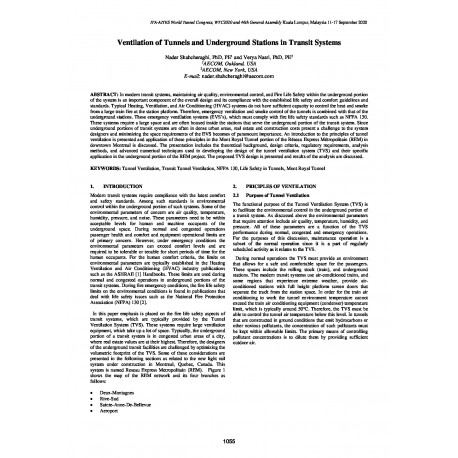Cart
0
0
No document
0,00 €
Total
Document successfully added to your shopping cart
Quantity
Total
There are 0 items in your cart.
There is 1 item in your cart.
Total documents
Total shipping
To be determined
Total
Search & filter
Search for a publication
Search & filter
Viewed documents

Ventilation of Tunnels and Underground Stations in Transit Systems
id417
In modern transit systems, maintaining air quality, environmental control, and Fire Life Safety within the underground portion of the system is an important component of the overall design and its compliance with the established life safety and comfort guidelines and standards. Typical Heating, Ventilation, and Air Conditioning (HVAC) systems do not have sufficient capacity to control the heat and smoke from a large train fire at the station platform. Therefore, emergency ventilation and smoke control of the tunnels is combined with that of the underground stations. These emergency ventilation systems (EVS’s), which must comply with fire life safety standards such as NFPA 130. These systems require a large space and are often housed inside the stations that serve the underground portion of the transit system. Since underground portions of transit systems are often in dense urban areas, real estate and construction costs present a challenge to the system designers and minimizing the space requirements of the EVS becomes of paramount importance. An introduction to the principles of tunnel ventilation is presented and application of these principles in the Mont Royal Tunnel portion of the Réseau Express Métropolitain (REM) in downtown Montreal is discussed. The presentation includes the theoretical background, design criteria, regulatory requirements, analysis methods, and advanced numerical techniques used in developing the design of the tunnel ventilation system (TVS) and their specific application in the underground portion of the REM project. The proposed TVS design is presented and results of the analysis are discussed.


